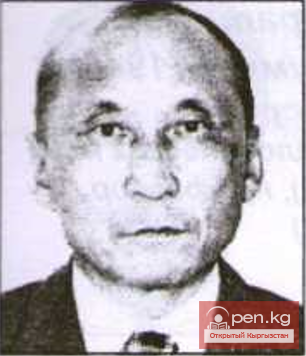REVIVING GLORIOUS PAGES
Frunze Street is not characterized by heavy urban traffic. There are no industrial enterprises here either. However, it is known not only to the locals. Thousands of tourists come here. They are attracted by the memorial museum of M.V. Frunze. The new pavilion, opened on October 29, 1967, is built in the shape of a rectangle resting on columns, the space between which is filled with glass and granite; on the facade walls, there is a thematic bas-relief depicting scenes from the revolutionary and military activities of M.V. Frunze. The authors of the memorial are architects Yu. Kariy and G. Kutateladze and artists A. Voronin and A. Kamensky, who created an original structure, preserving for future generations the thatched-roof house where M.V. Frunze was born and spent his childhood.
The name of M.V. Frunze is associated with glorious pages in the history of our country. The strikes of Ivanovo-Voznesensk workers and the battles on the barricades in Moscow in 1905, the struggle against counter-revolution in Moscow during the October days of 1917, the defeat of Kolchak on the Eastern Front, foreign interventionists, White Guards, and Basmachis on the Turkestan Front, the liquidation of Baron Wrangel's adventure, the organization and construction of the Red Army, diplomatic and military-theoretical activities - these are the main stages of M.V. Frunze's biography. This is what the exhibition tells, consisting of five sections, presenting 1500 authentic documents, photographs, and personal belongings.
On December 30, 1975, for its significant contribution to the education of workers in the spirit of Soviet patriotism and socialist internationalism, the M.V. Frunze Museum was awarded the Order of Friendship of Peoples.
...And now let’s walk down the street from the Aalamidin River to the west. The first thing that catches the eye is the new five-story residential buildings erected on the site of many dilapidated single-story houses and adobe huts. This is the microdistrict "Vostok - 1".
At the corner of Shopokova Street, on the site of the old "Trading Rows," stands the building of the new circus, which was solemnly opened in October 1976. The silver dome of the circus is visible from afar. This unique structure, designed for 2,000 people, has completely transformed the surrounding neighborhoods. A park with an original fountain stretches out to Soviet Street. On the left side of the street, at the corner of Soviet Street, a three-story building of the Central Pharmacy was erected in 1963 according to the project of architects G. Kutateladze and S. Kurbantalieva.
From Soviet Street to Dzerzhinsky Avenue on the left side, a park has spread out on the site of dilapidated houses. Further along, the street passes by the northern part of Panfilov Park, opposite which, a little further, is a five-story residential building with 102 apartments, a technical school of Soviet trade, and the Central Statistical Administration of the Kyrgyz SSR.
Ahead, at the intersection with Belinsky Street, is the complex of buildings of the Kyrgyz State University named after the 50th Anniversary of the USSR. In 1940, on the site of the former Bazaar Square, later the "Dungan Bazaar," or simply on a large wasteland, a two-story building of the pedagogical institute with a dormitory was built (architect P.P. Ivanov).
During the Great Patriotic War, it housed a hospital. In the post-war period, the building was reconstructed - a third floor was added. In 1951, the university was established on the basis of the institute. Student and faculty dormitories were built on the university square. Currently, 13,520 students study at the university across sixteen faculties, including 8,765 (as of October 1, 1989) in the day department. The faculty includes 2 academicians, 5 corresponding members of the Academy of Sciences of the Kyrgyz SSR, 36 professors, and 216 associate professors, 33 doctors, and 421 candidates of sciences. The university is associated with the activities of prominent scholars such as philology professors I.A. Batmanova, K.K. Sartbaeva, B.M. Yunusalieva, K.K. Yudakhin, chemist I.G. Druzhinin, biologists A.A. Lyubishchev and A.I. Yanushevich, mathematicians Ya.V. Bykov and G.A. Sukhomlinov, historians B. Jamgerchinov, A.G. and B.M. Zima, G.G. Kuranov, S. Ilyasov, A.K. Khasanov, philosophers S. Dzhumagulov and A.T. Tabaldiev, and many others.
In 1958, according to the project of architect P.P. Ivanov, the section of Kropotkin Street from the university to Soviet Square was transformed into a park, completely transforming this previously unremarkable corner.
In the 1980s, the park underwent significant reconstruction. Fountains with marble cladding appeared, paths were laid with decorative tiles, and flowerbeds became richer.
Few know that in the past, Frunze Street was called Sudeyskaya. Its main "sights" were the "Trading Rows" and the market. There was also a brewery at the corner of Sudeyskaya and Yarmarochnaya (since 1938 - Gogol Street) (formerly V.N. Nikolsky's). In 1925, it produced 1,100 buckets of beer per year. Later, in the 1930s, the building housed the "Masloprom" base, and then a repair and mechanical plant "Soyuzmyasomoltara" settled there.
On the section from Soviet Street to Dzerzhinsky Avenue in the 1920s and 1930s, there were the regional statistical office and a secondary school. Later, the school building housed a police club; at the corner of Dzerzhinsky Avenue, the city railway station was located for many years. At the corner of Soviet Street, from 1936 to 1968, the Central City Children's Library operated, named after M.V. Frunze since 1946. With the establishment of the "Museum of the History of the Revolution" (the M.V. Frunze Museum was called until 1940), in 1927, Sudeyskaya Street was renamed Frunze Street.
Losev D.S., Kochkunov A.S. What the Streets Tell
Streets of Bishkek
















































